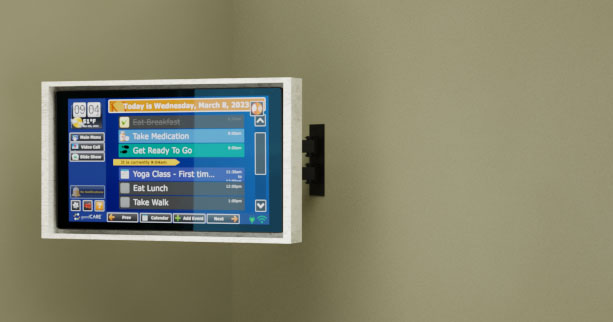GrandCare listed by Maturity Matters one of the providers in the “fore-front” of aging technology
Lifestyle … Technology
High Tech and High Touch: Eldercare in the XXI Century
Doris Bersing, PhD
President and Co-Founder, Living Well – Assisted Living at Home
89% of Americans do not want to leave their homes when they age. Most of these people will be live alone and receive support from a variety of health and community-based providers, family caregivers.
How will the long-term care system provide care to a growing number of seniors living in increasingly scattered locations? And more importantly, how can that system continue to provide quality care in the face of workforce shortages, rising care costs and decreasing resources? Technology has the potential to play a critical role in launching a new model of geriatric care that allows older people to live independently for as long as possible, supports family caregivers in the important work they do and gives health care providers the tools they need to deliver high-quality care at a reasonable cost.
The mix of caring people, technology, and expertise in gerontology is the key to being able to keep people living and aging within their own homes regardless of whether they are healthy and engaged or dealing with chronic physical illness or dementia.
The High Tech Element of the Equation: Technology Helps Seniors Live Independently
In March of 2008, the Center for Aging Services Technologies released a useful report on the state of technology in aging services. Three groupings of technologies are cited: health and wellness technologies, safety technologies, and social connectedness technologies.
Recently showcased at the Silver Summit at the CES in Las Vegas, there are many exciting technologies being developed to help seniors to stay independent and aging in place . Some of them are:
* Home Monitoring Systems – connect monitoring devices, deploying in ASP model with web interface including: emergency response, fall detection, passive motion monitoring (for persons with Dementia/wander risks), bed monitoring (for fall risks and incontinence). Intel, GE, and Grand Care are two of the providers at the fore- front of these technologies
* Tele-medicine Devices: Blood pressure, weight scale, pulse oximeter, all blue-tooth devices connected to a main platform that communicates information to the caregivers or medical centers. These can be combined with the home monitoring technologies
* GPS Shoes designing footwear with a built-in GPS device that could help track down “wandering” seniors suffering from Alzheimer’s disease. This will provide the location of the individual wearing the shoes anywhere on the planet and provide a virtual fence around the elder, enabling them to walk to familiar places but alerting others if they veer off track.
* Medication Monitoring Systems that range from InRange’s EMMA device to the “smart” pill dispensers that work with sensors to alert them to missed dosages and give reminders of the appropriate time to take their medications.
* Walking aids like walkers that can steer away from obstacles and be retrieved by remote control or a cane that can detect warning signs when a person is in danger of falling
* Intelligent phones helping people with memory problems to remember who called last time or the name and relationship of the person calling
* Robotic Nurses developed to help nurses, home health workers and caregivers lift people who cannot walk or help older folks with other activities. A prototype is developed by Vecna Technologies of College Park, MD, with funding from the U.S. military
…



